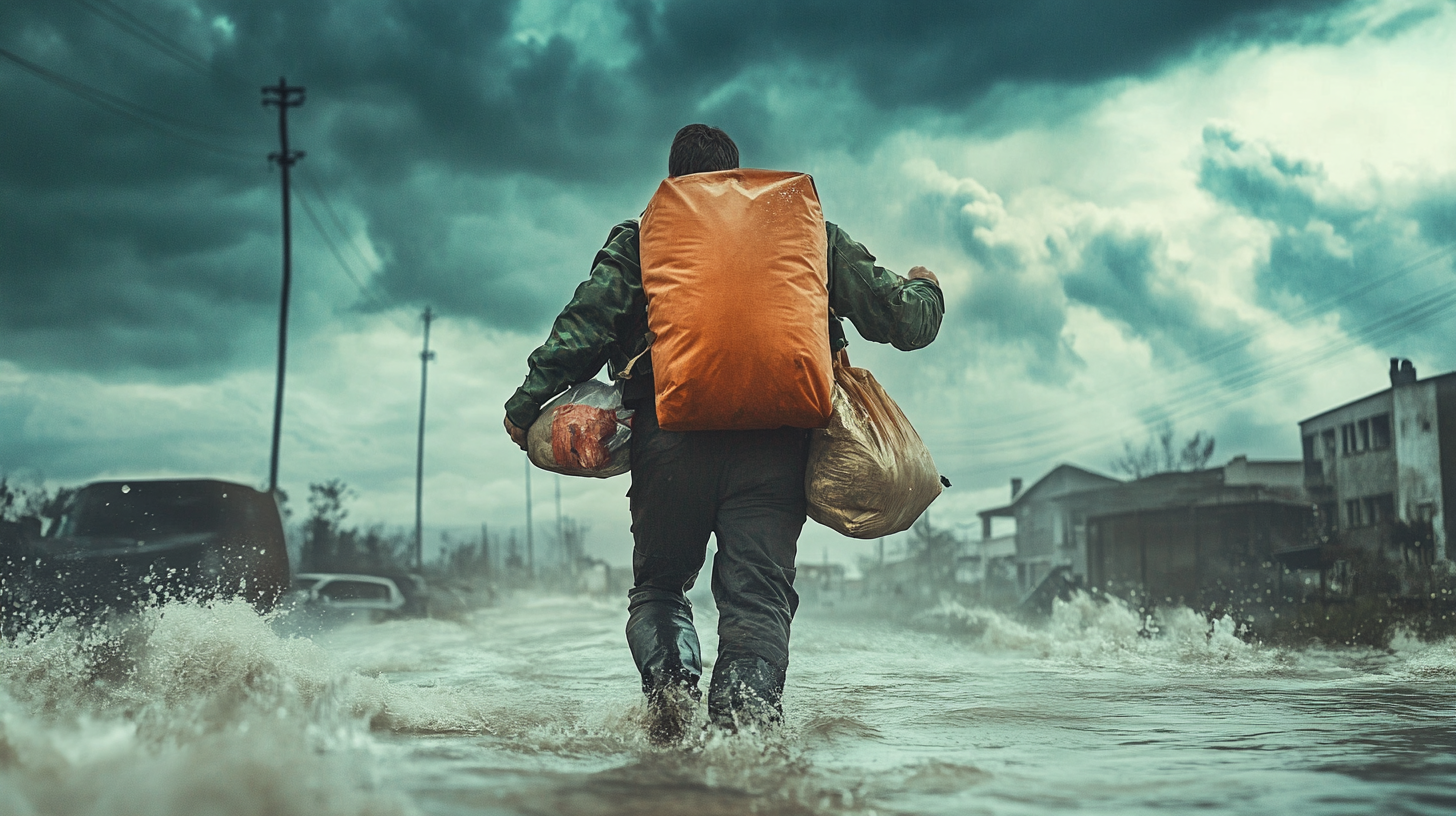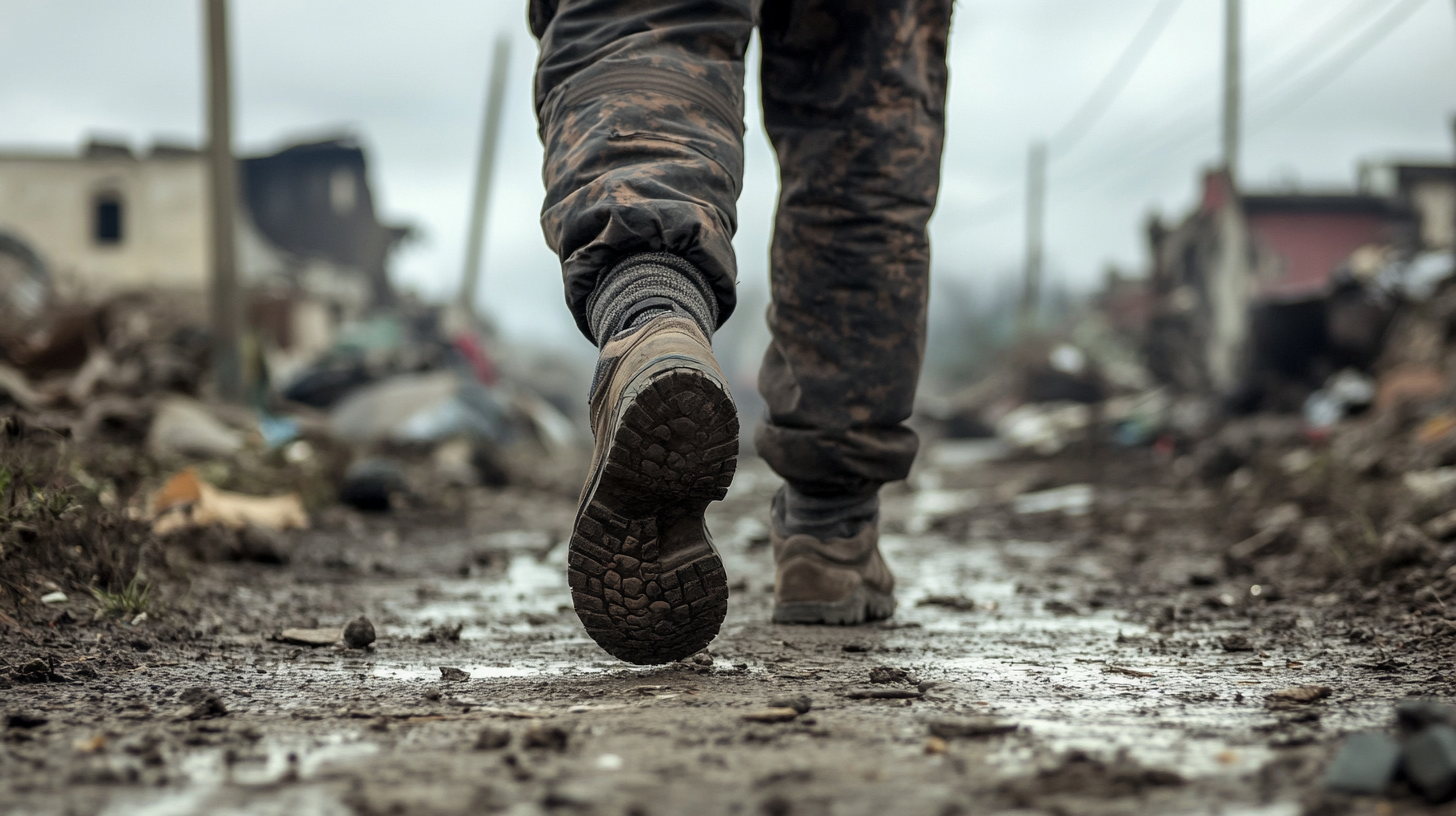Bugging Out on Foot: Essential Strategies for Long-Distance Emergency Travel

Bugging out is a crucial survival strategy for those who need to evacuate quickly in emergencies. While many preppers plan to use vehicles, circumstances may force them to travel on foot instead. This reality makes it essential to prepare for a walk-out bug out scenario.
There are several reasons why bugging out on foot might become necessary. Natural disasters could damage roads and infrastructure. An electromagnetic pulse could disable vehicles. Or fuel shortages might make driving impractical. By planning ahead for these possibilities, people can increase their chances of reaching safety even without motorized transportation.
Factors Impacting Foot-Based Evacuation
Current Circumstances
Leaving on foot is a serious choice. It means the situation has become dire enough to abandon shelter. Natural disasters like wildfires or hurricanes may force this decision. However, for some crises like disease outbreaks, staying put could be safer. Carefully weigh the risks before setting out.
Travel Companions
Solo travel allows for quicker movement. Groups move slower, especially with children or those with limited mobility. Plan accordingly based on who will be in your party. Consider alternate options if some members can't handle a long journey by foot.
Distance to Safe Location
The length of your trip matters greatly. A nearby relative's home may be reachable on foot. But traveling hundreds of miles without transportation is unrealistic for most people. Choose a destination that's within a reasonable walking distance.
Climate Conditions
Weather plays a big role in foot travel. Rain, snow, or extreme heat can slow you down or put you in danger. Be ready for the typical weather patterns in your region. Pack proper gear and clothing to handle various conditions you might face along the way.
Physical Readiness
Fitness is key for successful foot evacuation. Don't neglect your health while preparing supplies. Regular exercise builds stamina needed for long treks. Try these simple workouts:
- Walk or jog with a loaded backpack
- Climb stairs in your home
- Bike around your area
- Do bodyweight exercises like push-ups and squats
A strong body helps you carry gear and keep moving when tired. Make fitness a part of your prep routine.
Remember these factors when planning a potential foot-based exit. Being ready for various scenarios increases your chances of reaching safety. Think through each aspect carefully to create a solid plan that fits your needs and abilities.

How to Make It When Fleeing on Foot
Pick Proper Shoes and Socks
Good shoes are key for a long walk. Choose boots or sneakers that fit well and are broken in. Don't forget thick socks to prevent blisters. Pack extra socks in your bag too.
Dress for the Weather
Wear clothes that match the season. Light layers work best in summer to avoid overheating. For cold weather, don't skip hats, coats, and gloves. The right outfit keeps you safe and comfortable.
Map Out Different Paths
Plan several ways to reach your safe spot. Look for quiet roads that most people don't know about. Stay away from busy places like stores, police stations, and main roads. These get crowded in emergencies.
Think about hiding supplies along your backup routes. This lets you pack less and still have what you need.
Pack Your Bag Smart
How you pack matters a lot. Put things you'll need fast in outside pockets. Group similar items together. Balance the weight in your bag. Heavy stuff goes at the bottom, close to your back. A well-packed bag is easier to carry and won't hurt your back.
Rest When Needed
Take breaks even if you want to hurry. Stopping helps you last longer. Use break time to drink water, eat snacks, and rest your feet. Just stay alert to your surroundings.
Share the Load
If you're in a group, split up the heavy gear. Don't make one person carry it all. Take turns keeping watch at night too. Working as a team makes the trip easier for everyone.
Practice Your Plan
Try out your escape route before you need it. Start with a light bag and work up to your full pack. Use hiking poles to help you walk.
As you practice, pay attention to:
- The path: How does it change in rain or ice?
- Your stuff: Do you have enough? Too much?
- Your bag: Is it comfortable?
- Your speed: When do you start to slow down?
- Your mind: How do you feel as you walk?
These test runs help you fix problems before a real emergency.
Key Takeaways
Bugging out on foot is a tough challenge that needs careful planning. It's not just about having the right gear. Physical fitness and mental toughness are crucial. A solid plan and practice runs are also needed.
Getting ready for a foot-based bug out is smart, even if you hope to never use it. It's a backup option that could save your life if other choices aren't available. Here are some key points to remember:
- Build up your stamina and strength
- Learn map reading and navigation skills
- Practice carrying your bug out bag for long distances
- Plan and test multiple routes to your safe location
- Pack light but include essential survival items
- Learn basic first aid and wilderness survival techniques
Preparing for a foot-based bug out might seem extreme. But it's a valuable skill set that can help in many emergency situations. Even if you never need to leave your home, the fitness and skills you gain will be useful in daily life.
Stay informed, stay prepared, and keep improving your survival skills. Your future self may thank you for the effort you put in today.
Common Questions About Bugging Out on Foot
What to Pack for a Foot-Based Evacuation
A lightweight backpack is key. Pack:
- Water and filters
- Compact food (energy bars, dried meals)
- First aid kit
- Multi-tool
- Flashlight and extra batteries
- Fire starter
- Shelter (tarp or tent)
- Warm, durable clothes
- Map and compass
- Cash and important documents
Keep the pack under 20% of your body weight for easier travel.
Planning an Escape Route
- Study maps of your area
- Mark several paths to your safe spot
- Pick routes with natural cover
- Avoid main roads and populated areas
- Note water sources along the way
- Plan rest stops every few hours
- Have backup routes ready
Staying Safe While Moving
- Travel in small groups if possible
- Move at night in high-risk areas
- Use natural cover to stay hidden
- Keep noise to a minimum
- Be aware of your surroundings
- Avoid confrontations
- Have a way to signal for help
- Know basic self-defense moves
Food and Water on the Go
- Carry water purification tablets
- Learn to find and clean water sources
- Pack high-calorie, non-perishable foods
- Bring a small pot for boiling water
- Know edible plants in your area
- Carry fishing line and hooks
- Ration food to make it last
- Stay hydrated to keep energy up
When to Leave vs. When to Stay
Factors to think about:
- How safe is your home?
- How long will supplies last?
- What dangers are outside?
- How far is your safe place?
- Are roads open for travel?
- Do you have a secure place to go?
- Are you healthy enough to travel?
Leave if staying puts you at more risk.
City vs. Wild: Bugging Out Challenges
Urban areas:
- More people and potential conflicts
- Limited natural resources
- Many buildings for cover
- Possible help from others
Wilderness:
- Fewer people but harsher conditions
- More natural resources available
- Need for outdoor survival skills
- Harder to find help if needed
Both need careful planning and the right gear.




